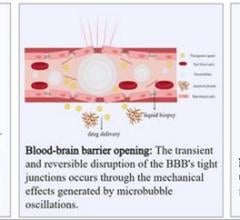
September 2, 2015 — Findings presented at the European Society of Cardiology (ESC) Congress 2015 indicate that a small left ventricle with thick walls is the strongest predictor of morphologic remodeling in chronic ischemic heart disease patients. This morphologic remodeling — detected via stress imaging tests — is generally considered a first step toward heart failure.
Results of the DOPPLER-CIP (Determining Optimal non-invasive Parameters for the Prediction of Left vEntricular morphologic and functional Remodeling in Chronic Ischemic Patients) study were not expected and, if confirmed by other studies, “could completely change risk stratification among patients with stable coronary artery disease,” according to the study coordinators Frank Rademakers, M.D., and Jan D’Hooge, Ph.D.
“We were indeed surprised by these findings,” said the investigators, who are from the University of Leuven, Belgium. “The general belief is that larger ventricles with thin walls (a typical ‘infarct ventricle’) would be at higher risk of remodeling, with a possible explanation for this being that there is increased wall stress in such hearts. But our findings show that it is actually small hearts with thick walls that are more at risk. As this goes against general belief, we have checked and re-checked our data, and analysis, and have run several consistency tests, but they all led to this same conclusion.”
There are currently no guidelines for assessing a patient's risk for this type of deterioration, they noted.
DOPPLER-CIP compared different non-invasive methods to determine the most useful tool at baseline for predicting risk of cardiac remodeling two years later.
The study included 676 patients from six European countries with suspicion of chronic ischemic heart disease.
The patients underwent standard diagnostic tests at baseline including: electrocardiogram (ECG), exercise testing with continuous ECG monitoring, and measurement of maximal oxygen uptake (VO2max), as well as blood sampling and quality of life assessments. In addition to these standard tests, patients also underwent at least two stress imaging tests including echocardiography, magnetic resonance imaging (MRI) and/or single positron emission computed tomography (SPECT) stress test, stress echo and stress MRI.
After these baseline evaluations all patients received optimal, guideline-based treatment including revascularization, partial revascularization or pharmacologic treatment at their physician’s discretion.
At the end of the study period, about 20 percent of the subjects had evidence of cardiac remodeling based on MRI or echo results, with the best baseline predictors of this remodeling being left ventricular size measured as the “left ventricular end-diastolic volume” (LV EDV) and left ventricular mass (LVM).
Specifically, a small LV end-diastolic volume (< 145 ml ) at baseline had a 25-40 percent chance of remodeling, compared to a larger EDV which had a decreased risk (20 percent; P<0.001) with risk also increasing with increasing wall thickness. (P=0.003).
“By identifying baseline LV EDV and LVM – measurements that can easily be assessed with standard imaging – as the best predictors of future remodeling and potentially heart failure risk, our study could guide clinicians away from more expensive tests for risk assessment,” investigators said.
For more information: www.escardio.org


 May 29, 2024
May 29, 2024 








